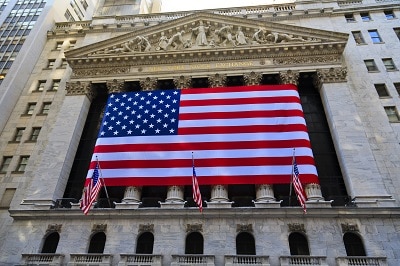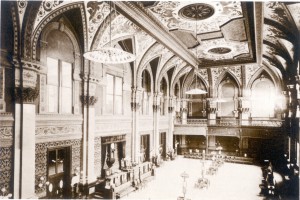What is the New York Stock Exchange?
The New York Stock Exchange (or NYSE) is the largest stock exchange in the world. Think of it as an organized, fast-paced flea market where buyers and sellers from all over the world come to trade U.S. and international stocks. This is where over 2,800 of the biggest U.S. companies have their shares listed. On average, over 1 billion shares are traded each day. The NYSE is located on Wall Street in New York City.

History
Before the New York Stock Exchange became as powerful as it is today, it started as a group of merchants meeting near a buttonwood tree in the late 1700s to trade bonds from cities, states, and revolutionary war bonds; and a few stocks from the growing businesses in New York City.

These merchants met near the intersection of Wall Street and Broad Street until they pooled their resources in 1817 to rent a building on Wall Street so they could continue to meet out of the cold and rain. This building became the first New York Stock Exchange (NYSE).
During the 1800s, the industrial revolution began sweeping across the country and the NYSE was at the center of financing its growth. Thousands of businesses were started and needed access to funds to finance their growth. Many of them sold stock on the NYSE to raise capital to build factories and expand their businesses.

The first half of the 19th century also saw a huge boom in canal building. Canal construction was financed partly through government funding (through government bonds) and by selling shares in the canal companies to investors. These stocks would pay dividends to investors based on the canal tolls, once completed. By the 1840s, canal companies were replaced with railroad construction companies, that were financed almost entirely through the sale of stocks.
It was during the railroad boom that the NYSE transitioned from being centered around bond trading to being mostly focused on the buying and selling of stocks. However, it was not just because of the railroads that this transition took place. The invention of the telegraph allowed news on stock prices to reach investors immediately.
Instead of waiting for newspapers and other publishers to compile lists at the end of the day or week; which didn’t include anywhere near all the stocks available on the market, the telegraph allowed investors across large distances to trade relatively easily. Other innovations like the transatlantic cable in 1866, and the telephone in 1876 facilitated trade even further.
The industrialized companies, with their rapid growth, were the biggest reason investors on Wall Street began to move into stock trading rather than bonds. With a bond, the yield was usually based on the likelihood that whoever was borrowing the money would default, and fail to pay it back. Stock prices were based on the expected future profits of the business they represented ownership of. It was cheaper for businesses to raise capital through selling shares than it was to issue bonds.
Before the industrial revolution, most businesses outside of large trading organizations grew very slowly, and usually didn’t issue any public stock at all. For most investors, buying bonds was their only option, even though they were risky and had fairly low yields. Industrial companies on the other hand, promised big growth and big profits, and were eager to sell shares to the public to raise capital quickly (so they could start businesses faster), encouraging new investors to take part. The rapid growth in canal and railroad stocks carried over to other industries, and has grown ever since.
The NYSE was the center of some of the most important economic events in the United States, including Black Thursday in 1929, which was one of the events that started the Great Depression.
The NYSE Today
The NYSE is still the largest stock exchange in the world, where investors gather on the famous trading floor to trade stocks, and other commodities. It doesn’t matter if you use an online brokerage account. The brokerages still pass orders to clearing houses who finalize the trades through the stock exchange itself. Even if all the transactions are electronic, each of wouldn’t have a brokerage account without the NYSE.